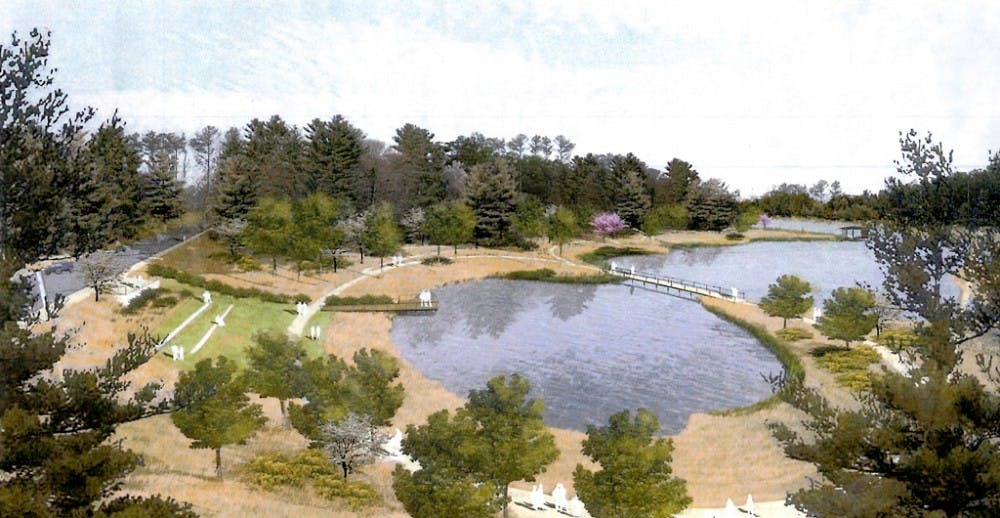A man-made pond will soon help Duke reduce its dependence on city water while providing a new recreational outlet for the community.
In Spring 2013, the University is set to break ground on a roughly four-acre water reclamation pond that will increase Duke’s self-sufficiency in water usage while also serving as a park. The pond will be located near the intersection of Circuit Drive and Towerview and Erwin roads and could save the Duke up to 100 million gallons of potable water annually.
The reservoir, to be completed Spring 2014, will provide water to Duke’s chilled water plants, which satisfy most of the campus’ water needs and are the largest users of potable water, Vice President for Facilities John Noonan wrote in an email Sunday. The chilled water plants help air condition a significant number of facilities on campus, among other functions.
The entire pond area will be six acres in total as it includes recreational space. There will be walking trails surrounding the pond, though there will not be any recreational activity in the water, Noonan said, noting that the park will be an amenity for the entire campus.
The cost of the project is expected to be about $9 million. About $6 million or $7 million will be spent on the pond itself, and the remainder will be used to fund the park’s construction, said Executive Vice President Tallman Trask. Duke is currently the largest user of the city of Durham’s water, which presents concerns about dependency on the city.
“Going back to the [2007] drought, we started wondering about whether there were ways we could... protect ourselves against drought, [and be] maybe a little less dependent on the city,” Trask said.
The pond will also be useful for future University projects when water issues need to be taken into consideration, Trask added. It is designed to handle varying water levels during different seasons and will be able to fluctuate between three and five acres.
Construction cannot begin until Duke acquires the proper permits from the city of Durham and the U.S. Army Corps. of Engineers, which investigates, develops and maintains national environmental resources, particularly water.
“This is not an easy thing to get permitted because we’re interrupting stream water, so it has to go through the permitting process, which will probably take much of this year,” Trask said. “We’ll [start construction] as soon as we can.”
The Durham Public Works Department has not yet begun dealing with the permitting process, Public Works Director Marvin Williams said.
“This project is still in the planning stages with the project management staff, designers and facilities people at Duke,” Williams wrote in an email Tuesday. “There have been no submittals of this project beyond concept sketches and potential site locations.”
Trask said he anticipates that the project will be approved.
“We don’t think [getting the permits] will be a problem, it just takes time,” Trask said.
Get The Chronicle straight to your inbox
Signup for our weekly newsletter. Cancel at any time.

